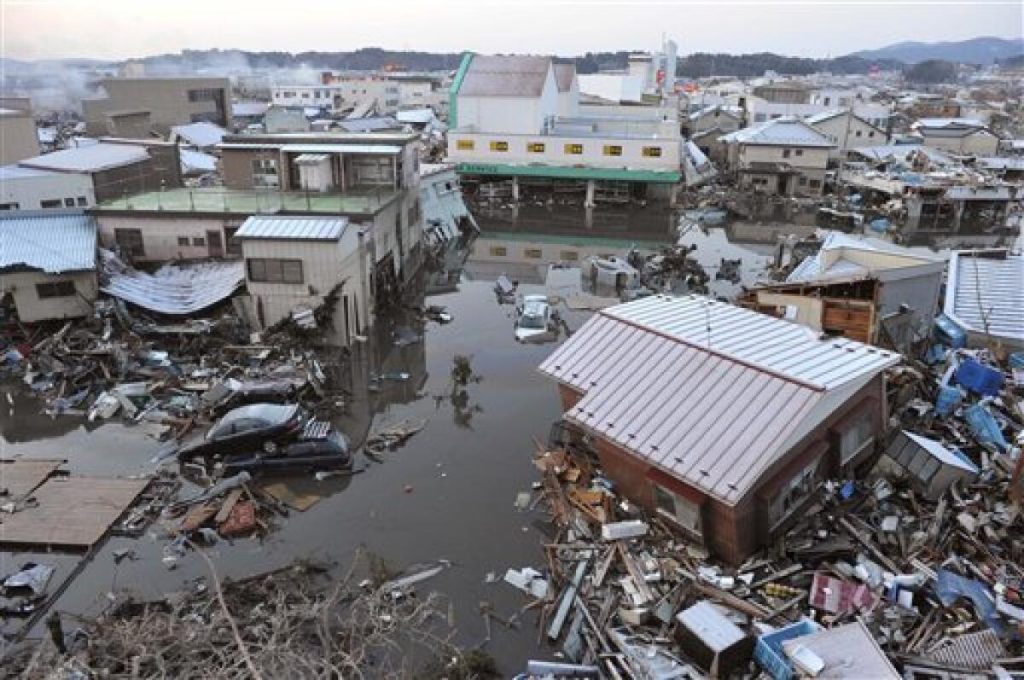Current Context:
A major earthquake with a preliminary magnitude of 7.6 hit north-central Japan.
About:
- it was one of more than 50 quakes of 3.2 magnitude or more to rock the region on the New Year’s Day.
- Soon after, the Japan Meteorological Agency issued a tsunami warning along the coastal regions of Ishikawa, Niigata and Toyama prefectures.
- Waves at least 1.2m high hit the Wajima port and a series of smaller tsunamis were reported elsewhere, including as far away as the northern island of Hokkaido.
- The Japan Meteorological Agency (JMA) initially issued a “large tsunami” warning, meaning waves of up to five metres.
Why is Japan more prone to earthquakes?
• Japan is situated along the ‘Pacific Ring of Fire’, which is the most active earthquake tectonic belt in the world.
- The ‘ring’ refers to “an imaginary horseshoe-shaped zone that follows the rim of the Pacific Ocean.
- This is an area, where many of the world’s earthquakes and volcanic eruptions occur,” according to a report by Live Science.

About Earthquake:
- An earthquake in simple words is shaking of the earth. It is a natural event. It is caused due to release of energy, which generates waves that travel in all directions.
- All natural earthquakes take place in the lithosphere.
History of Japan earthquake:
- In 2011, Japan was hit by a 9.0 magnitude earthquake and a resulting tsunami which devastated its northeastern coastal communities, killing around 18,000 people and displacing tens of thousands.
- Those tsunami waves led to a nuclear meltdown at the Fukushima power plant, causing the most severe nuclear accident since the 1986 Chernobyl disaster in the Soviet Union.
About Tsunami:
- Tsunami is a series of giant ocean waves caused by earthquakes or volcanic eruptions under the ocean.
- It can travel across entire ocean basins with devastating force.
- These waves can move at incredible speeds and, upon reaching shallower coastal waters, transform into massive walls of water capable of causing widespread destruction.
What are the causes of Tsunami?
- Tsunamis are primarily caused by the sudden displacement of water, often resulting from underwater earthquakes, volcanic eruptions, or landslides beneath the ocean floor.
- The most common trigger is an undersea earthquake, where tectonic plates shift and create a disturbance in the water above.
- As the displaced water travels outward from the epicenter, it forms the initial waves of a tsunami.
- Submarine volcanic eruptions and underwater landslides can also displace large volumes of water, triggering tsunami events
Preparedness of Tsunami in India:
- Indian Ocean Tsunami Warning System (IOTWS): India collaborates with other countries to detect tsunamis via strategically placed sensors and issue timely warnings.
- India’s Tsunami Early Warning Centre (ITEWC): It is located at the Indian National Centre for Ocean Information Services (INCOIS), Hyderabad, this center analyzes data and issues advisories to stakeholders.
- Public awareness and education: INCOIS works with the National Disaster Management Authority (NDMA) to conduct mock drills, workshops, and trainings to educate coastal communities about tsunamis.
- Enhancing Community Preparedness: India leads the way in “Tsunami Ready” communities, with Venkatraipur and Noliasahi villages achieving this UNESCO-IOC distinction.
- Advanced Software: INCOIS utilizes software for earthquake monitoring, multi-mode early warning dissemination, and decision support, ensuring efficient communication of alerts.
Other biggest Tsunami:
- Indian Ocean Tsunami (2004): One of the deadliest tsunamis in recorded history, triggered by a massive undersea earthquake off the coast of Sumatra, Indonesia. The waves reached heights of up to 100 feet and affected countries around the Indian Ocean, claiming hundreds of thousands of lives.
- Lituya Bay, Alaska (1958): Although not ocean-wide, the landslide-induced tsunami in Lituya Bay stands as one of the tallest tsunamis ever recorded. Triggered by a massive rockfall, waves reached an astounding height of 1,720 feet, causing widespread destruction in the bay.

